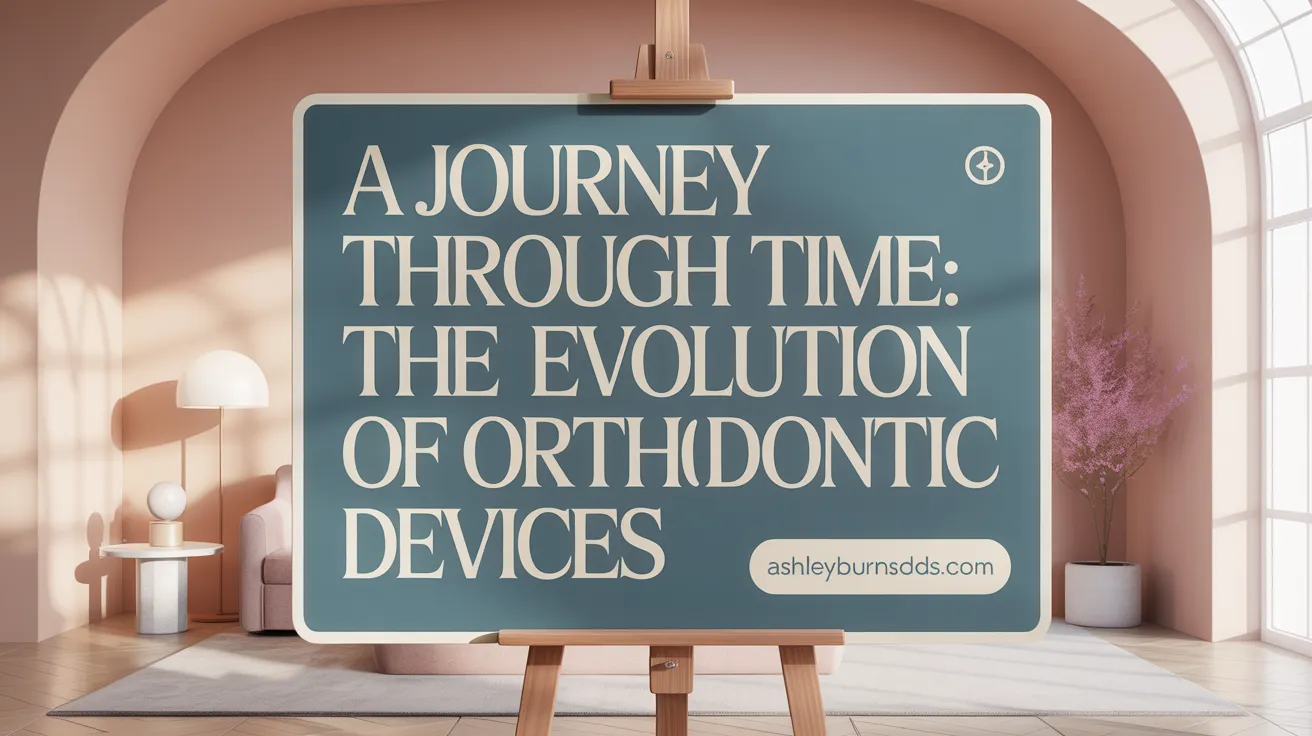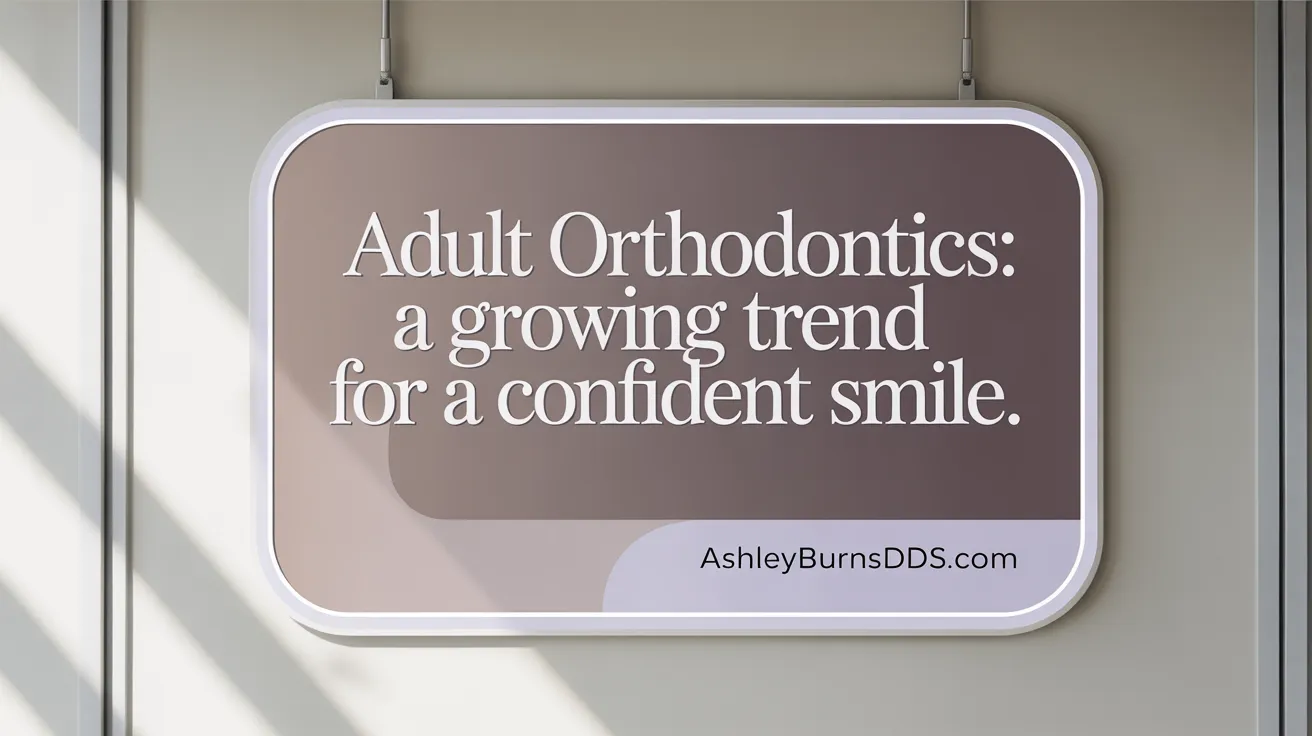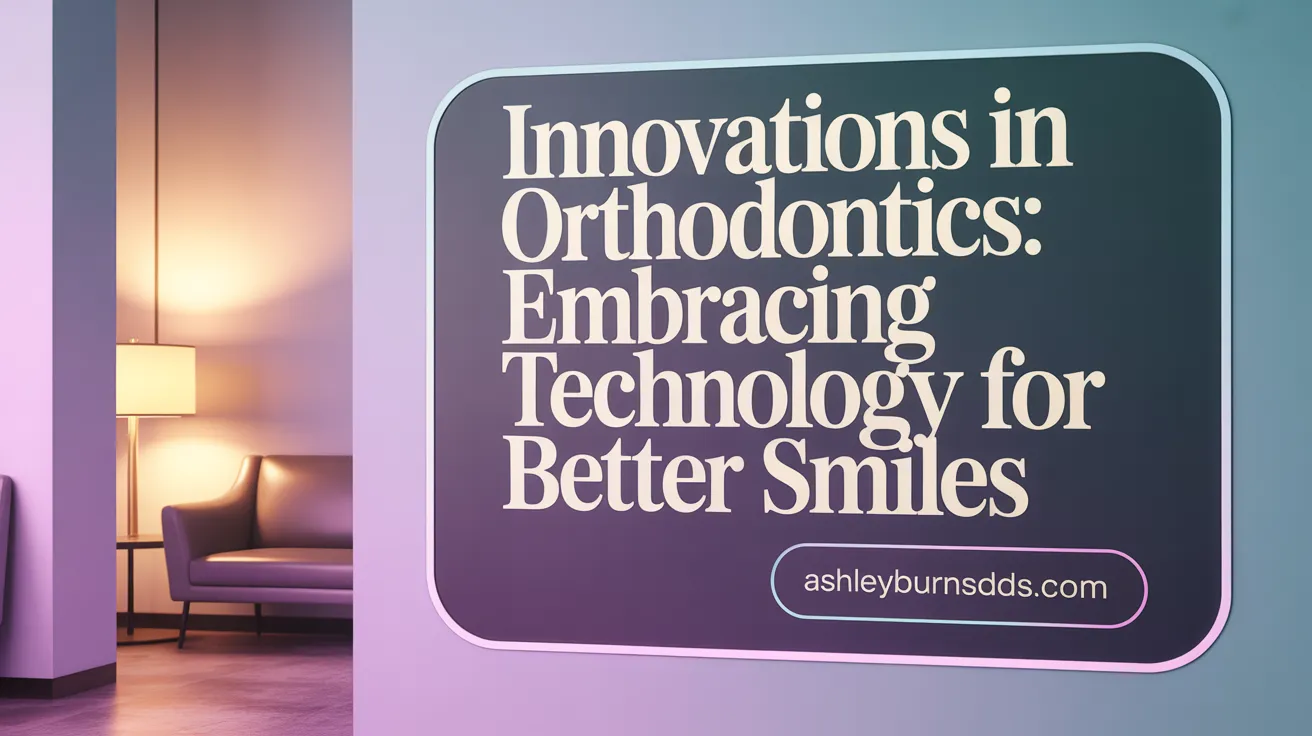A New Era in Orthodontics
Orthodontic treatment is experiencing a significant transformation, especially among adults seeking more aesthetic and effective solutions for dental alignment. This article explores the current statistics, market growth, and emerging technologies that define the orthodontic landscape in 2025 and beyond, with a focus on braces, Invisalign, and innovative treatment options.
Historical Overview and General Facts About Orthodontic Devices

What are the historical background and general facts about braces and other orthodontic devices?
Orthodontic devices, including braces, have a history that spans over three millennia. Ancient civilizations such as Egyptians, Etruscans, Greeks, and Romans experimented with early forms of dental correction using materials like gold, silver, and even animal tissues to straighten teeth and maintain alignment (History of braces as a status symbol).
Modern orthodontics started to take shape in the early 19th century. Notable milestones include Christophe-Francois Delabarre's invention of woven wire braces in 1819, which marked a significant advancement in mechanical tooth movement. Later, Edward Angle in 1899 established the classification system for malocclusions, laying foundational principles that still influence orthodontic treatment today (Orthodontics overview).
Throughout the 20th century, materials evolved notably. Initially using gold and crude wires, the industry transitioned to stainless steel, offering increased strength and durability. The development of nickel-titanium alloys brought about more flexible, shape-memory wires, enabling more efficient and comfortable treatment (NASA's nickel-titanium orthodontic wires.
Advances in adhesives, brackets, and bonding techniques improved both the success and comfort of orthodontic devices. The late 20th century and early 21st century saw innovations like ceramic brackets for aesthetics and clear aligners such as Invisalign, which use computer-aided design and manufacturing for custom, nearly invisible treatment (Clear aligners Invisalign, Invisalign clear aligners).
Today, orthodontic devices serve not just cosmetic purposes but also address functional issues. They are employed to correct bite problems such as malocclusions, overbites, and crossbites, with treatment durations tailored to individual needs. The continuous evolution of materials and technology aims to create more discreet, effective, and comfortable orthodontic solutions (Advancements in orthodontic comfort.
Global Orthodontic Market Size and Growth Projections
 The orthodontics industry is experiencing remarkable growth, with the global market valued at approximately USD 21.23 billion in 2024. Projections indicate that this market will expand to around USD 65.13 billion by 2034, reflecting a compound annual growth rate (CAGR) of about 11.9% (Orthodontics Market Size, Orthodontic Market Size 2025-2029, global orthodontic market size growth). This steady increase underscores the rapid technological and aesthetic evolution within the field.
The orthodontics industry is experiencing remarkable growth, with the global market valued at approximately USD 21.23 billion in 2024. Projections indicate that this market will expand to around USD 65.13 billion by 2034, reflecting a compound annual growth rate (CAGR) of about 11.9% (Orthodontics Market Size, Orthodontic Market Size 2025-2029, global orthodontic market size growth). This steady increase underscores the rapid technological and aesthetic evolution within the field.
Geographically, North America currently leads the market, holding more than 37.66% of the total share, mainly driven by high awareness, advanced healthcare infrastructure, and strong industry players like Align Technology and 3M (United States orthodontics market growth, Orthodontics Market Size, Align Technology Q1 2025 Financial Results). However, the Asia-Pacific region is expected to demonstrate the fastest growth, owing to large populations, increasing dental health awareness, and improving dental care facilities in countries such as China and India (Orthodontics Market Size, global orthodontic market size growth.
Several factors are fueling this surge in orthodontic treatments worldwide. Technological innovations such as 3D imaging, artificial intelligence (AI), and the proliferation of discreet options like clear aligners continue to make treatments more effective, faster, and more attractive to patients (Emerging Technologies in Orthodontics, Innovations in Orthodontics 2025, Clear aligners market size, Intraoral scanners). Additionally, growing awareness of the importance of dental aesthetics and better insurance coverage are increasing access, particularly among adults (Orthodontic Treatment for Adults, Orthodontic expenditures in the US).
The adult population now constitutes over 75% of the orthodontic market, owing to factors like increasing self-awareness, social perceptions, and health benefits—such as preventing dental decay and gum disease (Rise of Adult Braces, Adult orthodontics motivations, Adult Orthodontics Market Growth). With around 50% of the population affected by malocclusion or misaligned teeth, the demand for orthodontic care remains high (Misaligned teeth prevalence in the U.S., Orthodontic Treatment Priority Index).
In summary, the global orthodontic market is set to grow substantially over the coming decade, driven by technological advancements, expanding awareness, and rising consumer demand in emerging regions. This expansion presents significant opportunities for industry stakeholders to innovate and improve patient outcomes worldwide (Orthodontics Market Size, Trends in Orthodontics, U.S. invisible orthodontics market forecast).
Comparing Orthodontic Appliances: Braces vs. Aligners

How do different orthodontic appliances, such as braces and aligners, compare in terms of effectiveness and user preference?
Both braces and Invisalign clear aligners are highly effective in correcting various types of teeth misalignments, with success rates generally around 88% to 90%. Traditional braces, especially metal and ceramic types, tend to offer slightly better long-term stability, particularly in complex cases involving significant bite corrections or severe malocclusion. They excel at achieving precise tooth movements and establishing proper occlusion.
Invisalign , on the other hand, often results in shorter treatment durations—averaging about 14.5 months—making it attractive for patients seeking quicker outcomes. Patients also report higher satisfaction with aligners because they are discreet and customizable Invisalign and generally more comfortable than traditional braces. This comfort and aesthetic advantage significantly influence patient preference, especially among adults and teenagers concerned about appearance.
However, Invisalign may require more refinements and can sometimes involve additional aligner sets, especially in complex cases. Studies indicate about 17% of patients initially opting for aligners switch to braces to better address severe misalignments, which can extend the overall treatment time.
Patients with mild to moderate malocclusions typically benefit most from clear aligners for adults, while traditional braces are often recommended for more complex orthodontic problems. The ultimate choice depends on factors like case severity, aesthetic considerations, treatment objectives, and personal comfort preferences.
In summary, although both options are effective, traditional braces are generally preferred for complicated cases due to their precision, while Invisalign appeals to those prioritizing comfort and aesthetics for less complex issues.
Adult Orthodontics: Trends, Demographics, and Motivations

Rise in adult orthodontic treatments
The landscape of orthodontics is experiencing a significant shift, with about one-third of all patients now being adults over 18 years old. This rise signifies increased interest among grown-ups in pursuing orthodontic care, driven by advancements in technology and changing aesthetic standards (Orthodontic Treatment for Adults, Adult orthodontic treatment statistics, Adult Orthodontics Market Growth.
Demographic factors influencing treatment
Various demographic elements impact the likelihood of adults seeking orthodontic solutions. Higher-income groups, with more than half earning over $100,000 annually, tend to access these treatments more frequently. Additionally, women represent approximately 61% of adult orthodontic patients, highlighting a gender gap in treatment uptake (Adult Orthodontics Market Growth, Orthodontic Treatment Priority Index).
Motivations including aesthetics and dental health
Adults are primarily motivated by desires to improve their smile's appearance and overall dental function. Concerns about health issues, such as risk of tooth decay, gum disease, and abnormal wear, also play crucial roles. Many adults opt for discreet options like clear aligners and ceramic braces to maintain their social and professional images (Health Benefits of Straight Teeth, Clear Aligners Options, Ceramic Brackets Benefits, Orthodontic considerations for adults).
Impact of COVID-19 and video conferencing effects
The COVID-19 pandemic notably influenced treatment perceptions. With increased use of platforms like Zoom, many adults became more aware of their dental aesthetics. This heightened self-awareness has contributed to a surge in adult orthodontic treatments, underlining the psychosocial benefits of a straight smile (Impact of COVID-19 on Orthodontic Treatment, Orthodontic treatments during the COVID-19 pandemic, Psychosocial factors in orthodontics.
In summary, technological progress, aesthetic preferences, and pandemic-induced self-awareness are converging to make adult orthodontics a rapidly growing sector. These treatments not only enhance dental health but also boost confidence, reflecting broader social trends towards personalized and discreet orthodontic solutions (Innovations in Orthodontics, Personalized orthodontic solutions, Clear aligners market growth forecast).
Technological Innovations Driving Orthodontics in 2025 and Beyond

3D printing and digital impressions
In 2025, 3D printing in orthodontics technology has revolutionized the production of orthodontic devices. Custom, precise aligners and braces are now created with high accuracy, significantly reducing treatment times and improving comfort for patients. Digital impressions obtained via intraoral scanners replace traditional molds, offering a faster, more comfortable experience and ensuring better-fitting devices. These advancements enable orthodontists to tailor treatments specifically to each patient, optimizing outcomes.
Self-ligating and lingual braces
Self-ligating braces benefits have gained popularity due to their efficiency and comfort. Unlike traditional braces that use elastic bands, these braces incorporate special clips that hold the archwire, reducing friction and allowing for quicker, less painful adjustments. Lingual braces positioned on the back side of teeth, are nearly invisible, providing aesthetic benefits. Ongoing improvements in lingual braces invisible orthodontics comfort and effectiveness make lingual braces an increasingly attractive option, especially for adults seeking discreet treatment.
Accelerated orthodontics techniques
To accommodate busy lifestyles, accelerated orthodontics devices like AcceleDent and Propel are employed. These tools use micro-pulses and high-frequency vibrations to stimulate bone remodeling, significantly shortening treatment durations. Such innovations appeal to patients who prefer quicker results without sacrificing effectiveness. The combination of these techniques with digital planning has made accelerated orthodontics a promising trend in 2025.
AI and teleorthodontics integration
Artificial Intelligence (AI) in orthodontic treatment planning is now integral by analyzing scans and predicting outcomes with high precision. This ensures personalized, efficient treatment plans. Teleorthodontics, involving remote consultations and digital monitoring, has expanded access to care. Patients can undergo virtual assessments, reducing the need for frequent office visits, and allowing orthodontists to track progress and make adjustments remotely, enhancing convenience and compliance.
Smart braces and eco-friendly materials
Innovative 'smart' braces equipped with sensors provide real-time data on tooth movement, enabling more responsive adjustments. Additionally, practices are increasingly opting for sustainable, eco-friendly orthodontic materials, minimizing environmental impact. These advancements focus on delivering effective orthodontic treatments while aligning with ecological values, offering patients cutting-edge options that are both environmentally conscious and highly effective.
| Technology | Benefits | Future Outlook |
|---|---|---|
| 3D printing / Digital impressions | Precision customization, shorter treatment times | Standard in most practices |
| Self-ligating / Lingual braces | Increased comfort, aesthetics | Growing adoption |
| Accelerated techniques | Faster results | Expanding availability |
| AI / Teleorthodontics | Personalized plans, remote access | Mainstreaming in practices |
| Smart braces / Eco-friendly materials | Real-time data, sustainability | Emerging and expanding technologies |
Market Insights: Invisalign and Clear Aligners Adoption Rates
How large is the Invisalign market and how fast is it growing?
The Invisalign market was valued at over $5.13 billion in 2024 and is projected to grow significantly, reaching approximately $13.9 billion by 2032. This reflects a compound annual growth rate (CAGR) of around 13.2% to 13.4%. The rapid expansion highlights increasing demand for discreet, custom orthodontic solutions worldwide, as detailed in the Clear Aligners Market Report.
What are consumer acceptance statistics and trends?
Invisalign has been adopted by over 18 million patients globally, including more than 4.5 million teenagers, demonstrating its widespread popularity. Patients value Invisalign for its aesthetics, comfort, and removable design, especially among adults aged 35 to 50. Notably, in the U.S., Invisalign use among orthodontists reached about 25.9 cases per doctor in late 2023. The treatment success rate for mild to moderate misalignments is roughly 80-90%, making it a preferred choice for many, according to Invisalign Statistics 2025 and Align Technology's Q1 2025 Report.
What technological advancements are shaping Invisalign and aligner treatments?
Advancements in digital technology, including 3D printing, digital scanning, and AI, are transforming aligner production and customization. Digital impressions replace traditional molds, improving fit and comfort. AI tools now analyze scans and predict treatment outcomes, leading to more precise plans and faster results. Remote monitoring via teleorthodontics further enhances patient convenience as highlighted in the Trends in Orthodontics 2025 and Innovations in Orthodontics 2024 resources.
Which demographics are primarily using Invisalign?
Adults constitute the largest segment, with over half of orthodontic patients seeking aligners, driven by aesthetic concerns and the desire for less visible options. The market growth is fueled by increased awareness, technological improvements, and societal factors like social media influence. Regional adoption such as in the South and West U.S. reflects global trends, as noted in Adult Orthodontic Patients Statistics and Adult Orthodontics Market Growth. Insights on consumer motivations and treatment preferences appear in Orthodontics decision-making study.
Who are the main players and how competitive is the industry?
Major companies include Align Technology, Dentsply Sirona, and Straumann, all investing heavily in innovation. The industry sees increasing competition from online direct-to-consumer brands, but traditional dental practices remain dominant, especially with the integration of digital and AI technologies. This competitive landscape fosters ongoing improvements and accessibility, expanding Invisalign’s market penetration as explained in Orthodontics Market Report 2024 and Clear Aligners Market Growth.
Impact of the COVID-19 Pandemic on Orthodontic Demand and Practices
Increased demand during pandemic
The COVID-19 pandemic led to an unexpected surge in demand for orthodontic treatments worldwide, including in the UK. This increase was partly driven by delays in other dental procedures and a rise in self-awareness about dental aesthetics1.
Shift toward remote and virtual care
Orthodontic practices adapted by incorporating teleorthodontics, allowing virtual consultations and progress monitoring. This shift reduced the need for frequent in-office visits, making treatment more accessible and convenient2.
Preference for less invasive treatments
During the pandemic, many patients showed a preference for less invasive options like clear aligners, which are easier to manage remotely and involve fewer visits. Clear aligners also tend to have a lower risk of infection compared to traditional braces3.
Effect of video conferencing awareness
Video conferencing platforms such as Zoom heightened people's awareness of their dental appearance. According to the British Orthodontic Society, about 84% of orthodontists noted an increase in adult patients seeking orthodontic care over the last five years, partly due to increased self-consciousness spurred by video calls4.
This trend highlights how global health crises can accelerate technological adoption in orthodontics and reshape patient preferences, emphasizing more discreet, digital, and remote treatment options.
Regional Market Analysis and Industry Challenges
North America market dominance
North America leads the global orthodontic industry, holding over half of the market share due to advanced healthcare infrastructure, high consumer awareness, and widespread adoption of innovative treatments like clear aligners. The U.S. alone had a market value of nearly USD 6.27 billion in 2024 and is projected to grow significantly by 2034, driven by technological advancements and increased adult participation (North America Orthodontics Market, United States orthodontics market growth).
Asia-Pacific growth trends
The Asia-Pacific region is predicted to be the fastest-growing market, thanks to rising awareness, improving dental healthcare systems, and large populations in countries like China and India. Developing economies in this region are experiencing a surge in aesthetic dental procedures, including Invisalign and lingual braces, fueled by increasing disposable incomes and progressive regulatory environments (Asia-Pacific orthodontics growth, Clear Aligners Market Growth in Asia Pacific).
Insurance and cost barriers
Despite technological advancements, high treatment costs remain a barrier for many patients. Traditional braces cost between USD 3,000 and USD 10,000, while clear aligners often range from USD 1,000 to USD 7,000. Insurance coverage varies widely, often covering only part of the expenses, which can limit access, especially for lower-income groups. Many practices rely on payment plans to make treatments more affordable (Orthodontic expenditures in the US, Orthodontic insurance coverage).
Regulatory environment effects
Regulations, such as the European Union’s Medical Devices Regulation, influence market dynamics and product innovation. These standards ensure safety and efficacy but can also introduce hurdles for new product approvals and technological adoption (Orthodontic Market Drivers and Regulation).
Disparities in access and expenditure
Access to orthodontic care varies considerably across demographics, with higher-income and privately insured individuals spending more on treatments. Disparities are evident with racial and socio-economic groups, where minorities and lower-income populations tend to have lower per capita expenditures. This uneven access highlights ongoing challenges in ensuring equitable orthodontic care globally (Disparities in orthodontic access and expenditure, Orthodontic treatment statistics and demographics.
Looking Forward: The Future of Orthodontic Treatments
The orthodontic field is rapidly evolving with significant market growth driven by technological innovation and changing demographics, especially the rising adult patient base. Advances in digital technology, AI integration, and emerging treatment modalities like accelerated orthodontics and smart braces are making treatments more effective, comfortable, and accessible. Despite challenges such as cost and insurance coverage disparities, the shift towards discreet, personalized solutions like Invisalign and lingual braces will continue to reshape the industry. As patient awareness and demand grow worldwide, orthodontics is poised for an exciting future where innovation and patient-centered care dominate.
